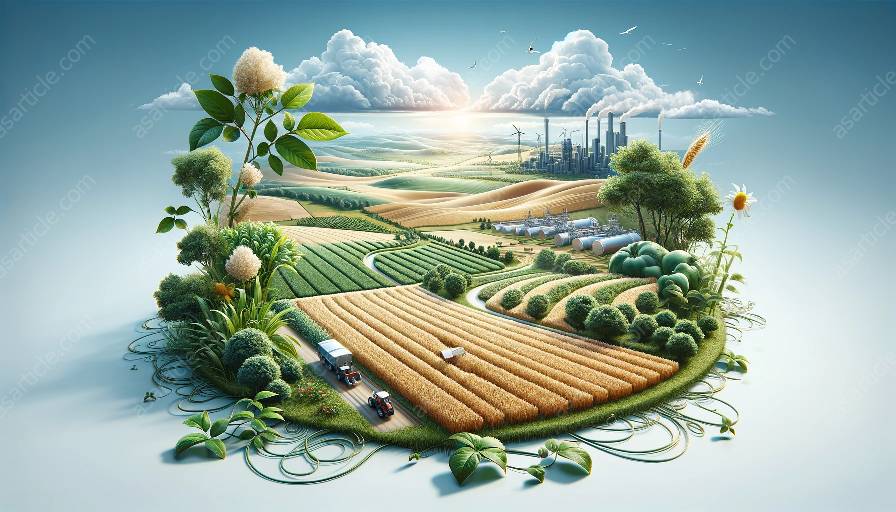Soil testing is a crucial step in determining the optimal fertilizer usage for agricultural purposes. By analyzing the nutrient composition and pH levels of the soil, farmers and agricultural scientists can make informed decisions about the type and amount of fertilizers to use.
Soil testing plays a significant role in agricultural sciences and is closely linked to fertilizer technology, as it helps in maximizing crop yield and minimizing environmental impact. This comprehensive guide explores the importance of soil testing, its relevance to fertilizer technology, and its impact on agricultural practices.
The Importance of Soil Testing
Soil testing enables farmers and agricultural scientists to understand the specific nutrient requirements of their soil. It provides insights into essential elements such as nitrogen, phosphorus, potassium, and micronutrients. By evaluating the soil's nutrient levels, pH, and organic matter content, farmers can devise precise fertilizer plans tailored to their crops' needs. This precision leads to improved crop quality, increased yields, and cost-effective fertilizer usage.
Role of Soil Testing in Fertilizer Technology
Fertilizer technology is constantly evolving to enhance agricultural productivity while minimizing environmental impact. Soil testing forms the foundation of effective fertilizer technology by providing accurate data for developing customized fertilizer formulations. By leveraging soil testing results, fertilizer scientists and manufacturers can create specialized fertilizers to address specific soil deficiencies and optimize nutrient uptake by crops. Advanced fertilizer technologies, such as controlled-release and precision application systems, rely on soil testing data to ensure targeted and efficient nutrient delivery to plants.
Benefits of Soil Testing in Agricultural Sciences
In agricultural sciences, soil testing is a fundamental tool for sustainable and precision agriculture. It empowers farmers to make informed decisions regarding fertilizer application, thus contributing to environmental stewardship and resource conservation. Additionally, soil testing supports the implementation of integrated nutrient management strategies, promoting balanced fertilization and reducing the risk of nutrient imbalances or soil degradation. Agricultural sciences benefit from soil testing as it enables data-driven agronomic practices, leading to optimized crop production and soil health.
Soil Testing Process
The soil testing process involves several key steps, including sample collection, laboratory analysis, and interpretation of results. Farmers typically collect soil samples from various representative areas within their fields. These samples are then analyzed in accredited laboratories to assess nutrient levels, pH, cation exchange capacity, and other relevant parameters. The test results are interpreted to formulate fertilizer recommendations based on the specific nutrient needs of the crops being grown.
Advanced Technologies in Soil Testing
With advancements in agricultural and environmental technologies, soil testing methods have evolved to offer greater accuracy and efficiency. Techniques such as remote sensing, precision soil sampling, and digital soil mapping enable high-resolution analysis of soil attributes across large agricultural landscapes. Additionally, sensor-based technologies and real-time soil monitoring systems contribute to precision agriculture by providing continuous feedback on soil conditions and nutrient dynamics.
Integration of Soil Testing and Precision Agriculture
Precision agriculture harnesses the synergy between soil testing and advanced technologies to optimize resource management and crop production. By integrating soil testing data with GPS-based guidance systems and variable rate technology, farmers can customize fertilizer applications based on the spatial variability of soil properties. This targeted approach enhances fertilizer usage efficiency, reduces input costs, and minimizes environmental impact, aligning with the principles of sustainable agriculture.
Future Perspectives
The future of soil testing for optimal fertilizer usage lies in continued innovation and integration with digital agriculture platforms. Emerging trends such as artificial intelligence, big data analytics, and machine learning hold promise for refining soil testing processes and enhancing predictive modeling of nutrient dynamics. As agricultural sciences and fertilizer technology advance, the synergy between soil testing and innovative technologies will drive sustainable agricultural practices and global food security.

